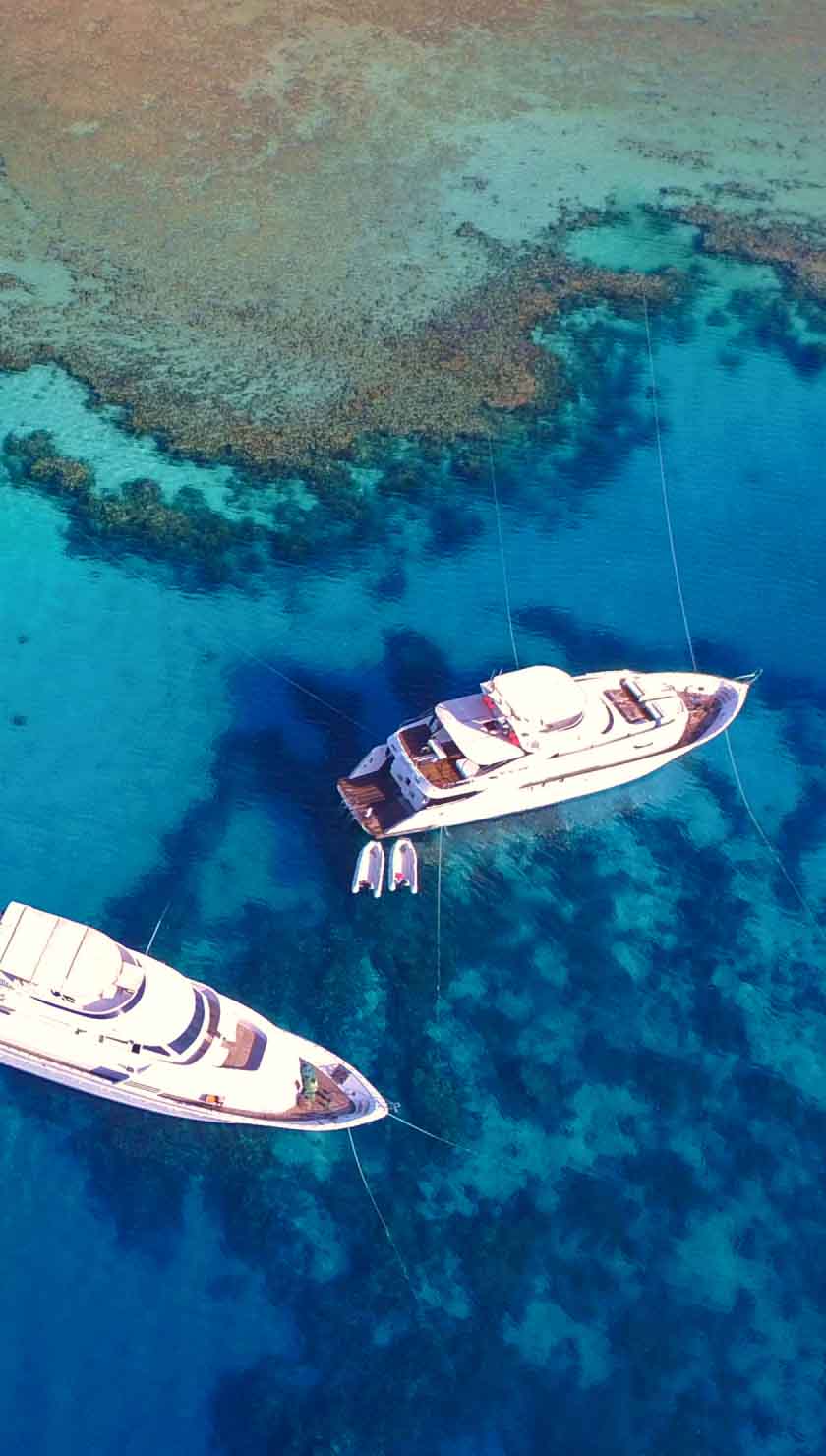Liveaboard Diving in Banda Sea
What to expect On a Banda Sea Liveaboard
Diving liveaboards in the Banda Sea offer a rare opportunity to take a dive trip to a region where the waters have remained effectively untouched. The area offers some of Indonesia's most spectacular scuba diving, perfectly suited for liveaboard diving cruises. The Banda Sea is an absolute underwater playground for scuba divers The plankton blooms mean the reefs and sea mounts are full to the brim with marine life. The Banda sea is in the very heart of Indonesia, between two other top diving locations Papua and Java. The Banda sea is also home to a number of the Moluccas island group and borders the Timor Sea to the South. Despite their prime location, the islands of the Banda Sea have retained an off-the-beaten-path feel, perfect to be explored on an Indonesian liveaboard. This may, in part, be because the ten islands that make up the Banda Islands archipelago are volcanic and sit between four tectonic plates, which means that the area is still quite active.
Despite the ample production of spices and wood, the Banda Islands are still relatively sparsely populated, outside of the main island of Banda Naria and Ambon in the Muluku Islands. This is fortunate for scuba divers and snorkelers as low fishing levels have kept the fish life abundant. Diving and snorkeling are one of the most popular tourist activities on the islands.
Bordering the Banda Sea to the West, the world’s 11th largest island Sulawesi is also a renowned area for Indonesian liveaboard diving. The island’s shape means that it benefits from a huge diverse coastline and some seriously deep drop-offs and pinnacles. Unlike the Banda Islands, Sulawesi has a much larger population and infrastructure, making it a good starting point for people who come to Indonesia to join a dive cruise.
The Banda Sea Underwater
A Banda Sea liveaboard cruise will take you to pristine reefs and hopefully encounters numerous pelagic species and excellent diving conditions. It is, however, the diversity of marine life that makes this area stand out for divers. Whatever your diving passion, dive tours here will have something to offer you. The reefs are caked with soft and hard corals and are home to a rainbow of reef fish with everything from wrasse to juvenile emperor angelfish. Macro photographers will be delighted to find mandarin fish and the unusual-looking Ambon scorpionfish, which are indigenous to these islands.
On the bigger end of the scale, there are plenty of pelagic to keep the big fish lovers happy too. One of the most magical sights in the Banda Sea is huge shoals of mobula rays gliding over the reefs. They aren’t the only rays and sharks in this area either; eagle rays are a common sight, as well as white-tipped reef sharks patrolling over the reefs. If you are fortunate enough, the most spectacular experience in the Banda Sea is to dive with schooling hammerhead sharks. These giants come here in huge numbers and often have 30 meters of visibility; this is truly an unmissable experience.
Adding to the excitement, spinner dolphins, orcas, and blue, pilot, and humpback whales can also be seen here on a liveaboard dive safari
Dive Sites of the Banda Sea
The sheer number and range of dive sites in this region are one of the reasons that scuba diving in the Banda Sea really is a diver’s dream. There are a few places, however, where the liveaboard diving is exceptional. The island of Pulau Ai is one of these largely because it is one of the best shark diving spots in the Banda Sea. Not only can you see hammerheads passing, sometimes even schooling, but elusive thresher sharks are also in attendance. These huge, long, and often shy sharks are an amazing sight when they come out of the blue over the reef.
Gunung Api is a fascinating and unique dive site and a must-visit for anyone scuba diving in the Banda Sea. The eruption and lava flow in the 1980s took out a large area of the reef, but it is the regrowth that is most fascinating. The rate at which the reef is returning to the same state as the undamaged parts have astounded scientists. There is also a chance that stronger currents will bring pelagics such as shoals of mobula rays to this island.
Sea snake fans, we know there are some out there, will find that Manuk Island is a dream come true. The warmer water caused by nearby volcanic vents is believed to contribute to the huge number of sea snakes, including several rare breeds found at Manuk. This is a great place for naturalists and underwater videographers to see the rare Chinese sea snake. There are also huge shoals of fish to be seen here, including barracuda and jacks.
Top Tips for Divers
- Good diving conditions and mild currents mean that this area is suitable for less experienced divers but beware of unexpected currents upwelling.
- Bear in mind that the season is Spring, and September to December and most liveaboard diving is available only during this time.
Getting to the Banda Sea
Considering the isolated nature of the islands, anyone considering scuba diving in the Banda Sea should consider liveaboard diving to be the only real option. There are many kinds of liveaboard boats in the Banda Sea to suit your budget and personal taste. In Indonesia, liveaboard diving is popularly done from a traditional Indonesian sailing ship called a Phinisi. These beautiful boats are the most peaceful and authentic way to spend your visit to the Banda Sea. Custom-built motor vessels operating in the Banda Sea offer a dive cruise with luxurious accommodations and top-of-the-range dive facilities.
Most Indonesian liveaboards cruises embark in Ambon in the Muluku islands, with a large harbor in the main town. Flights are available from Jakarta to Ambon daily, and the airport is only a short distance from the port. There are also ferries to Ambon from various parts of Indonesia, but the frequent schedule changes can make this a difficult option.











